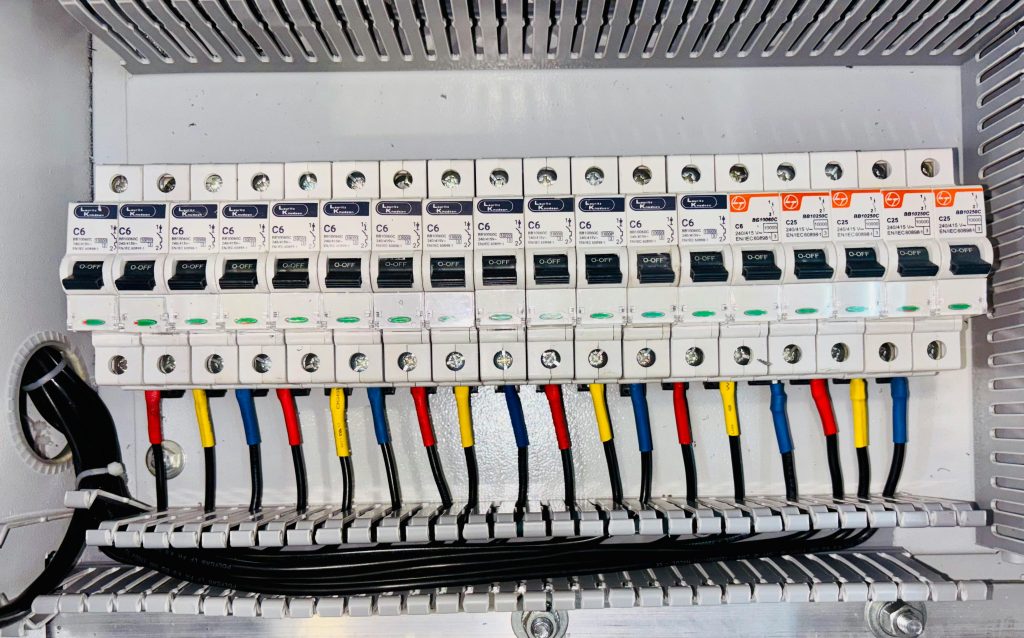In Short
An outdated switchboard may be putting your home and family at serious risk. If you’re experiencing frequent blown fuses, flickering lights, or notice signs of overheating, it’s time to investigate. This guide explains the key warning signs of switchboard problems and why timely upgrades are crucial for safety and compliance.
The Role of a Switchboard in Your Home
A switchboard is central to your home’s electrical system. It distributes electricity to various circuits and provides protection from overloads, short circuits, and electrical faults. Modern switchboards are designed to meet strict safety standards, including the installation of safety switches (RCDs) to prevent electric shock. Homes with outdated switchboards, often built before the 1990s, lack these critical safety features and are non-compliant with current Australian Standards (AS/NZS 3000).
Key Signs Your Switchboard May Be Outdated or Dangerous
Ceramic Fuses or Lack of Safety Switches
If your switchboard contains ceramic fuses or lacks RCDs, it’s likely outdated. These old components do not offer sufficient protection against electrical faults or shock.
Frequent Blown Fuses or Tripped Breakers
Experiencing constant power outages or blown fuses? This could mean your switchboard cannot handle your household’s current electrical load. It’s a sign that the system is struggling to cope and may be failing.
Flickering Lights and Power Fluctuations
Unstable lighting or fluctuating power are symptoms of poor distribution or ageing components within the switchboard. This can lead to damage of sensitive appliances and poses a serious fire risk.
Buzzing Sounds or Burnt Smell
Any strange sounds or odours coming from your switchboard should be taken seriously. They often indicate arcing, overheating, or component failure, which can quickly lead to electrical fires.
Visible Damage, Rust, or Discolouration
Physical signs of wear such as rust, water damage, or burn marks suggest your switchboard is deteriorating and unsafe. These are often found in older homes and are a strong indicator that an upgrade is necessary.
Modern Safety Standards and Compliance
Current Australian Wiring Rules (AS/NZS 3000:2021) mandate that switchboards include RCDs to prevent electrocution and meet minimum safety requirements. Older units that lack these features are not only dangerous but may also void insurance policies in the event of an electrical incident.
Risks of Delaying a Switchboard Upgrade
Failing to upgrade a faulty or outdated switchboard can result in:
- Electrical fires
- Electric shock
- Damage to electrical appliances
- Reduced compatibility with solar systems and EV chargers
- Voided home insurance due to non-compliance
When to Call a Licensed Electrician
If you notice any of the signs listed above or your switchboard has not been inspected in over 10 years, it’s time to contact a qualified professional. A licensed electrician can assess the safety of your current setup and recommend a compliant upgrade.
To ensure your family and property are protected, contact Neighbourhood Electrical for switchboard upgrades or call directly at 0427 638 771.
Key Takeaways
- Outdated switchboards are a major safety hazard in Australian homes
- Key warning signs include ceramic fuses, blown fuses, flickering lights, or burnt smells
- Modern standards require RCDs and safe load handling
- Delaying upgrades puts you at risk of fire, shock, and voided insurance
- Professional inspection and upgrade ensure safety, compliance, and peace of mind
References
Energy Safe Victoria. (2025). Switchboard Safety. Retrieved fromhttps://esv.vic.gov.au
Australian Standards. (2021). AS/NZS 3000:2021 Electrical Installations (Wiring Rules)
Master Electricians Australia. (2025). Electrical Safety in Homes. Retrieved fromhttps://masterelectricians.com.au
Ausgrid. (2025). Electrical Safety Advice. Retrieved fromhttps://ausgrid.com.au

